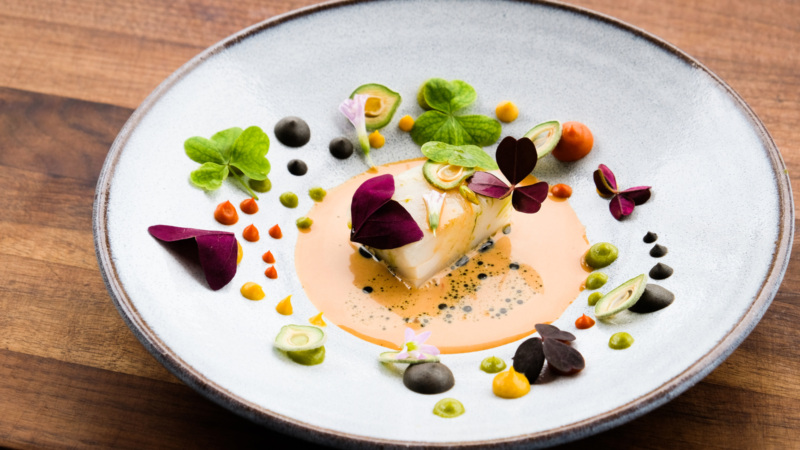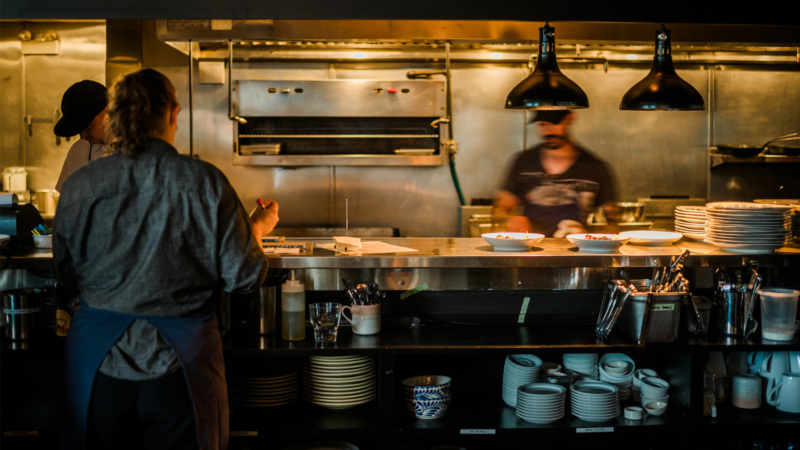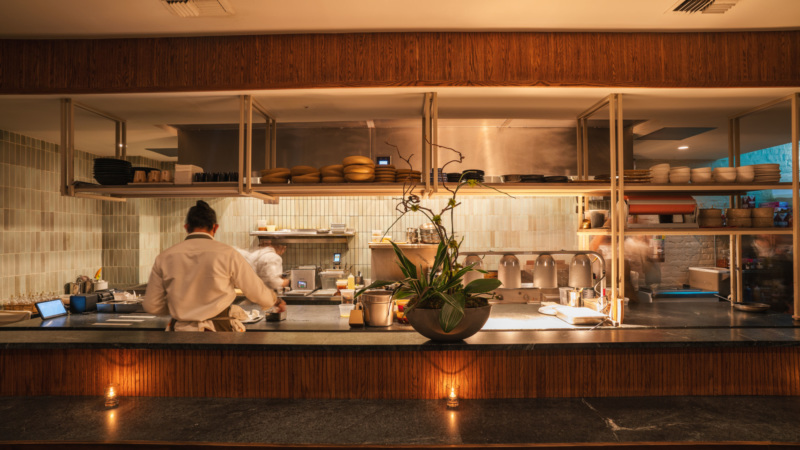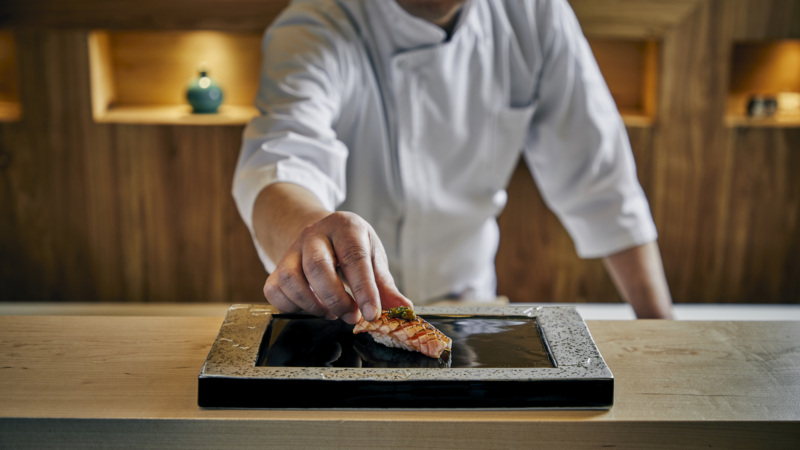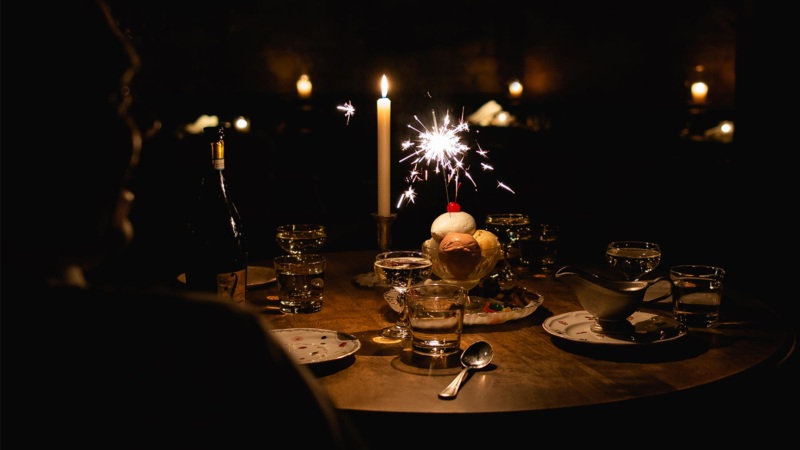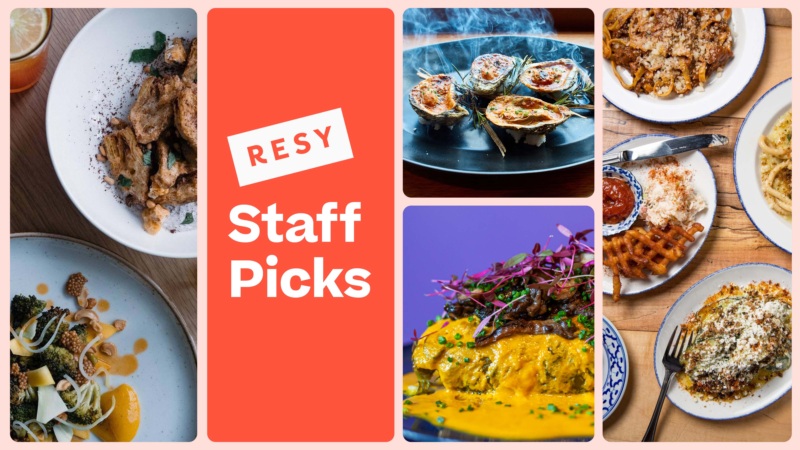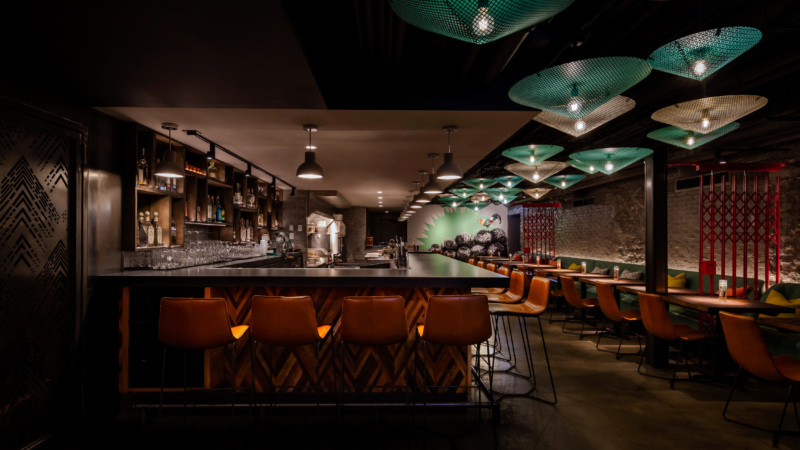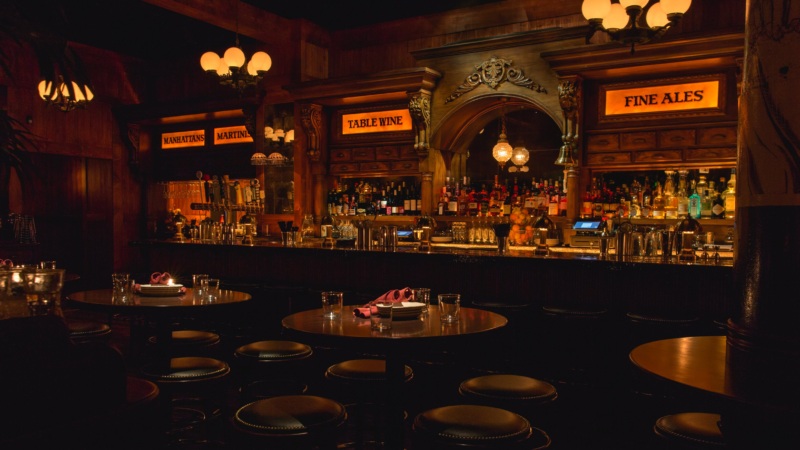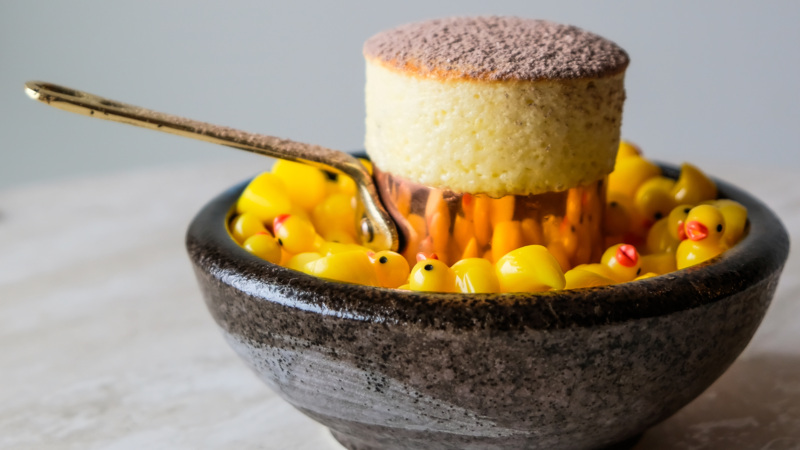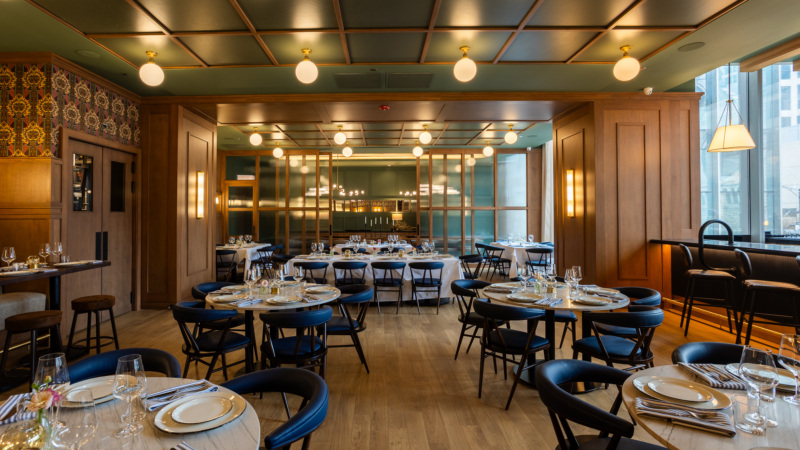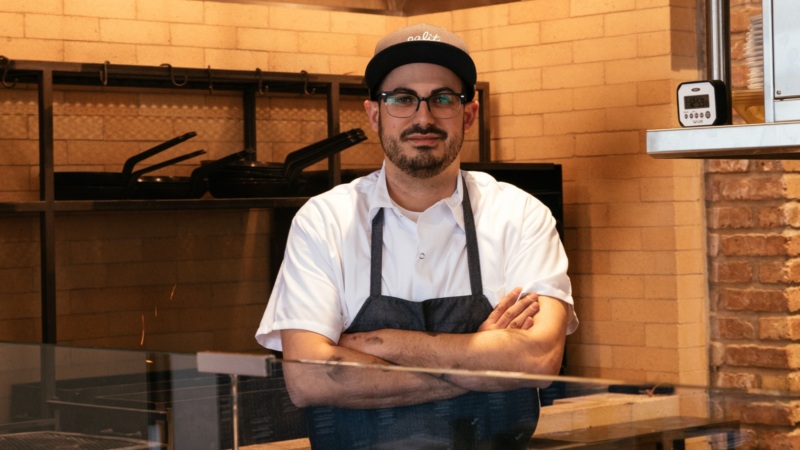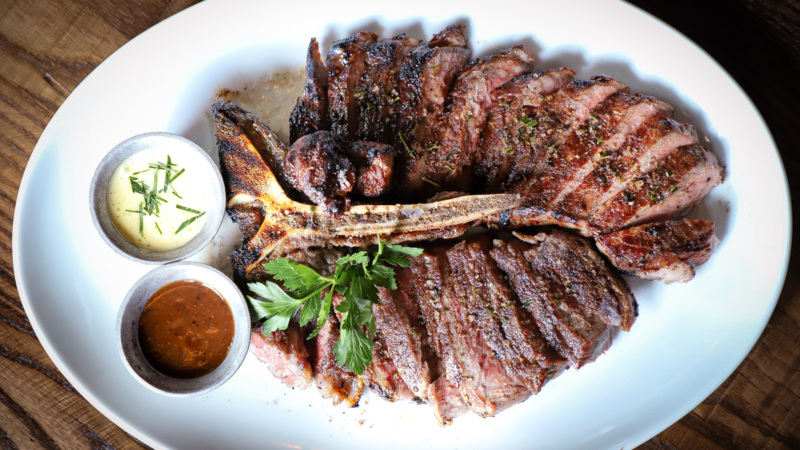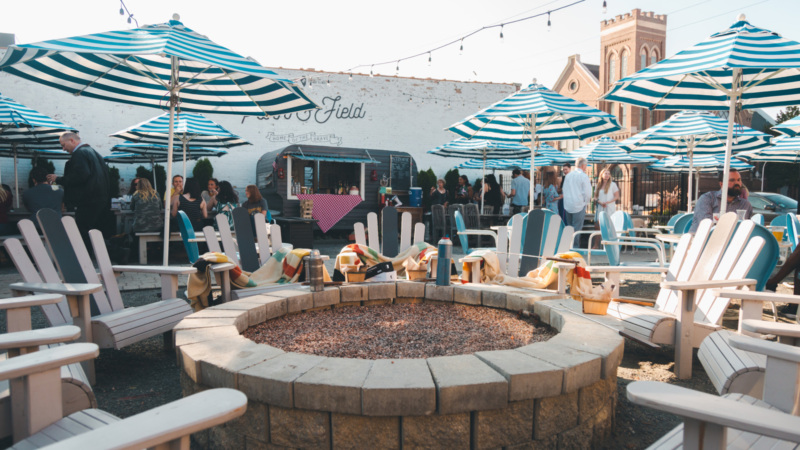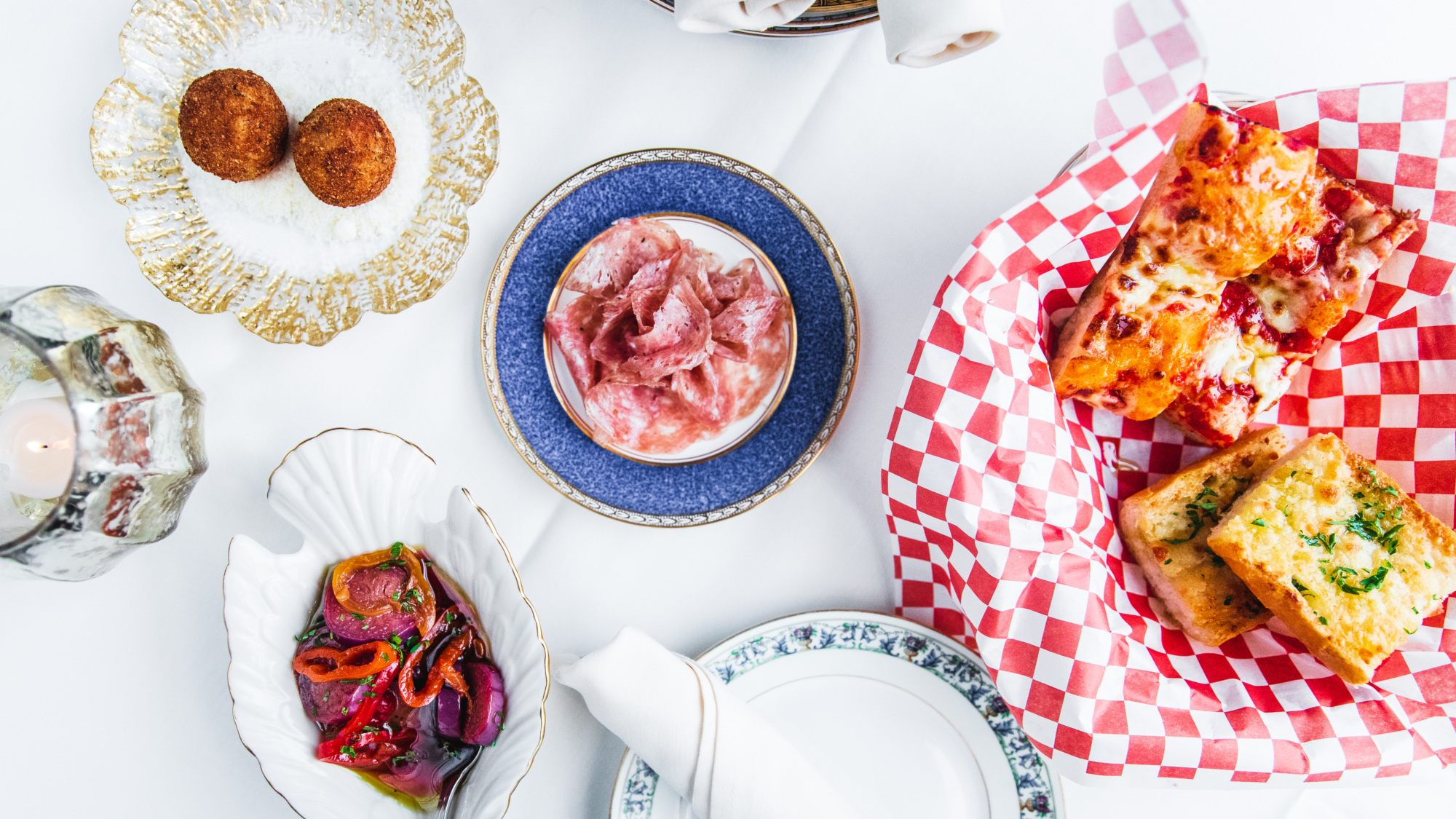
Everything You Need to Know About Elina’s, and Its Retuned Red-Sauce Classics
Elina’s opened in September on Grand Avenue in West Town, and for nearly every night since, the cozy spot has been packed with diners in search of comfort. That’s a goal realized for chef/owners Ian Rusnak and Eric Safin, who spent years racking up awards and acclaim at Michelin-starred restaurants. Now, their aim is to have a place that diners want to return to again and again — not for modernist flair or fancy flourishes, but for belly-warming nostalgia in the form of red sauce classics.
Their plan appears to be working. The 28 seats and 10 first-come, first-served spots at the bar are full even on weeknights, as diners toast over gingham-lined baskets of housemade tomato focaccia and plates of stretchy mozzarella en carozza. Elina’s is named after Safin’s mother, which should give you an idea of just how personal this project is to them. Perhaps that’s why they did many of the renovations themselves, or why they’re so hands-on with everything from china selection to the music.
Once you’ve got your reservation, here are five things to know before you go.
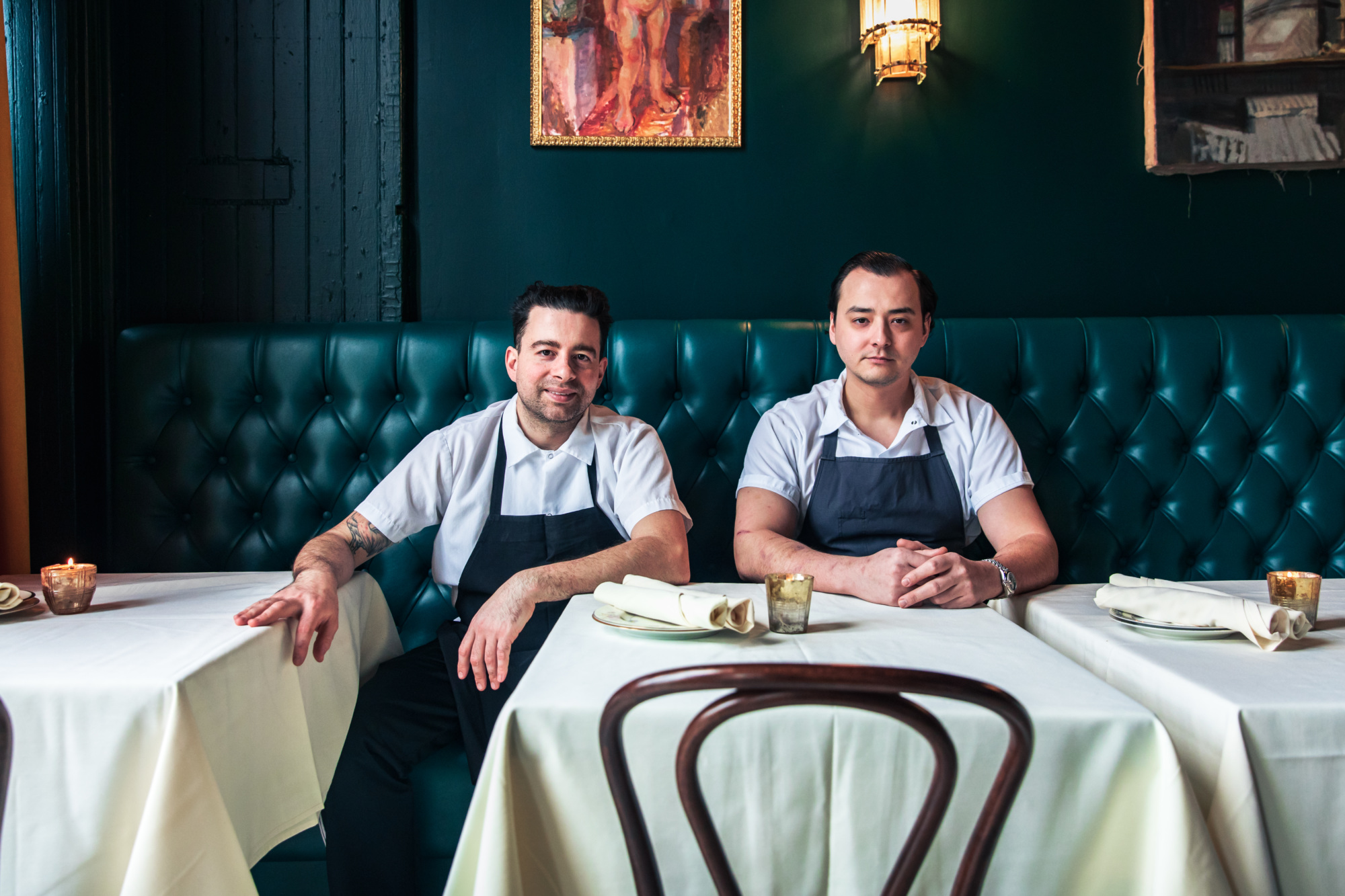
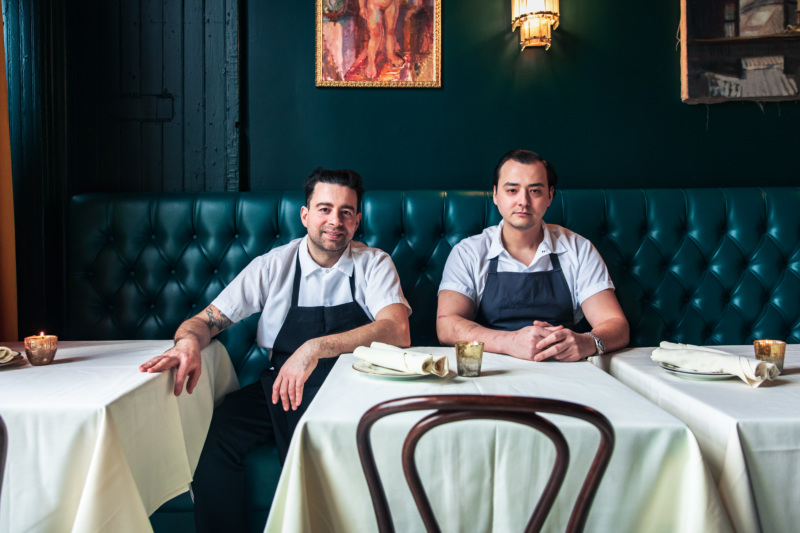
1. The chefs have been around the block.
Rusnak and Safin met while working under chef Marc Forgione in New York. Their resumes are packed with award-winning restaurants and accolades. Rusnak worked at spots like Blackbird, NoMI, Carbone, and did a stint with Hogsalt Hospitality, where he was the culinary director. Safin’s vast experience spans from being saucier at Jean Georges when they received their four-star New York Times review to opening his own spot, Restaurant Veronika, alongside Stephen Starr and Robert Aikens. He was also chef at ZZ’s Clam Bar in New York, where he maintained a coveted Michelin star.
During the pandemic, the two chefs took to the road, starting their own catering business. After traveling around the country, they realized they had landed on something big. While they offered three catering menus — Italian-American, French bistro/brasserie, and steakhouse — the vast majority of customers requested Italian-American. With their own little census, the chefs came to the conclusion that Italian-American cuisine, old-school as it may be, never gets old.
“Our intention with Elina’s menu is simply to pay homage to Italian-American classics. We’ve collected an array of iconic dishes, and pared them down to their essential components,” says Rusnak. This is a technique they call “all killer, no filler.” Their ethos is clearly on display at Elina’s, where dishes feel well-executed, if not particularly fancy. (You’re more likely to see melty mozzarella oozing into red sauce than caviar or truffles.) What you see here is what you get. And what you get is exactly what you want.
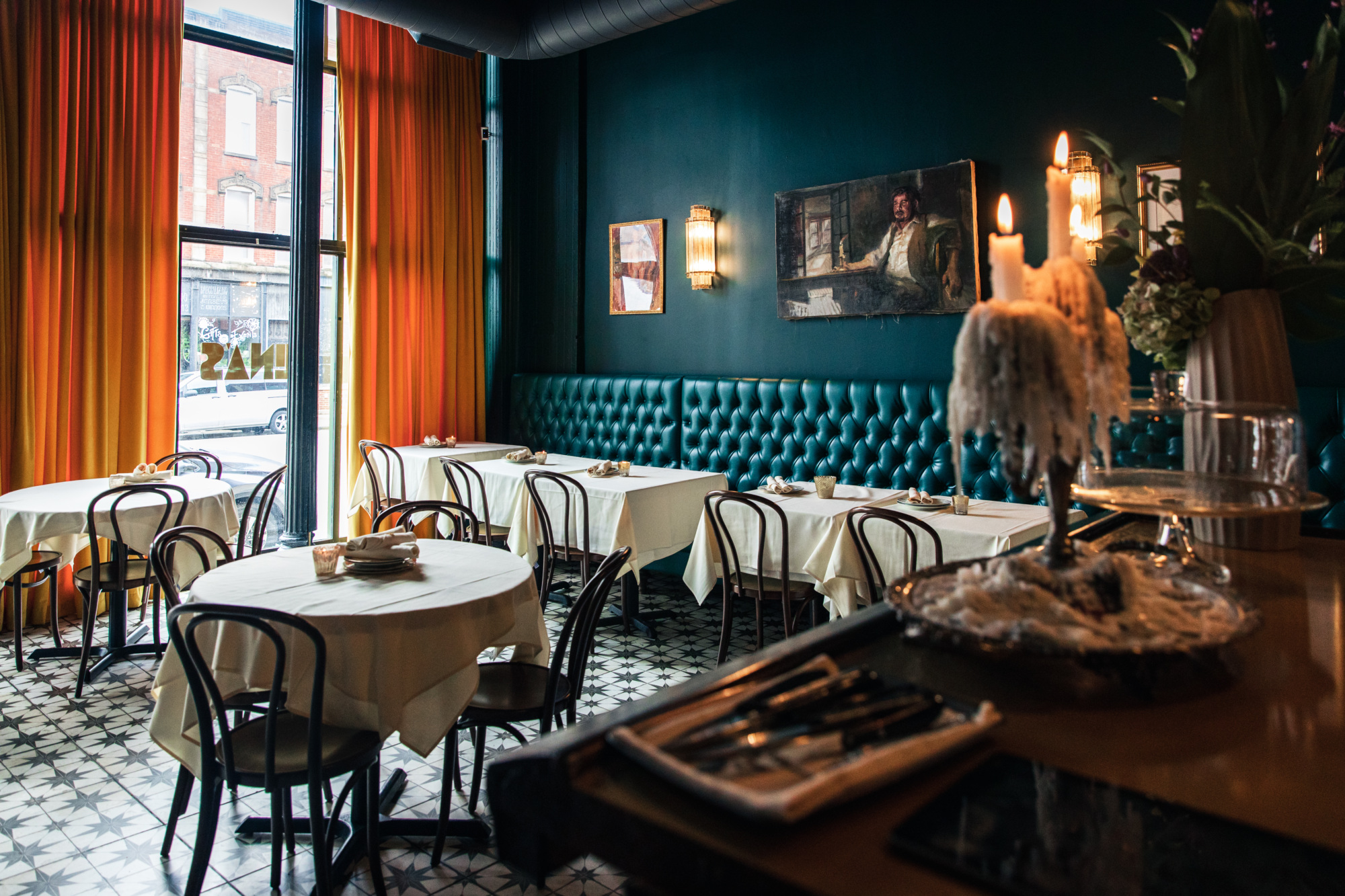

2. The atmosphere is modern-meets-homey.
The narrow entrance on Grand Avenue opens up into an airy space with high ceilings. You’ll step directly into the dining room, but the design feels deliberate — like you’re walking into a bustling living room. There’s no host stand or welcoming committee — instead, someone will pop up from behind the bar and whisk you to a freshly-tableclothed seat.
When it comes to decor, the chefs collaborated with interior designer Tatom Jackson. Their goal was coziness, so you’ll find soft, dim lighting, a candelabra dripping with wax on the bar, cushy teal banquettes, and a moody teal backdrop. Long, heavy yellow curtains keep the sunshine at bay and give diners privacy from the busy street outside. The artwork is by the chefs’ friend and artist Adam Holzrichter, who displays a rotating set of works on consignment. One fixture that stays put is a mesmerizing gilded world map on the ceiling.
The playlist is heavy on the nostalgia, too, with Frank Sinatra and Billy Joel making frequent appearances, though as the night deepens, the music gets a bit more current. Don’t be surprised if your fellow diners (who might be on a date or celebrating) start tapping their toes on the star-tiled floor.
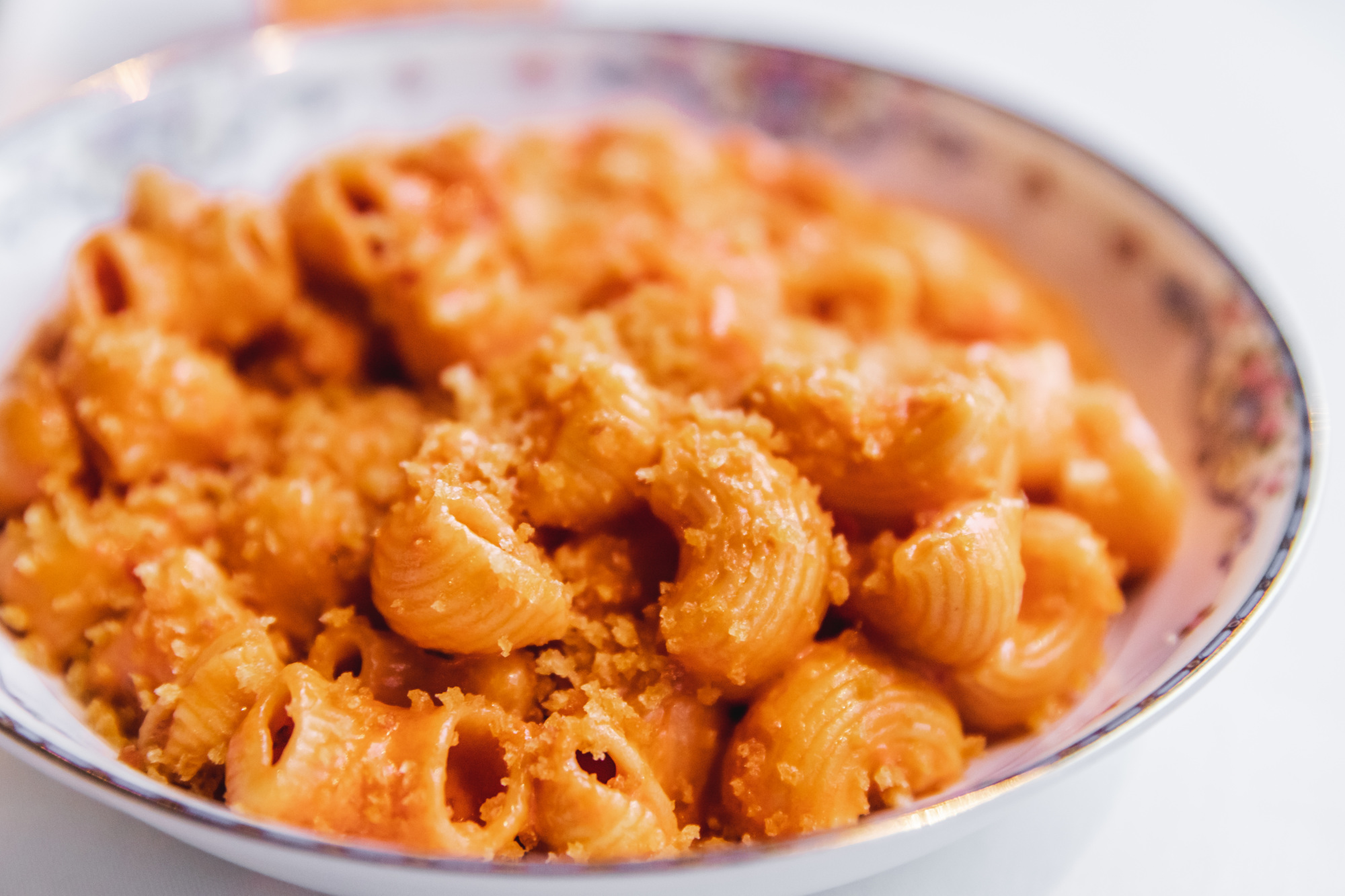
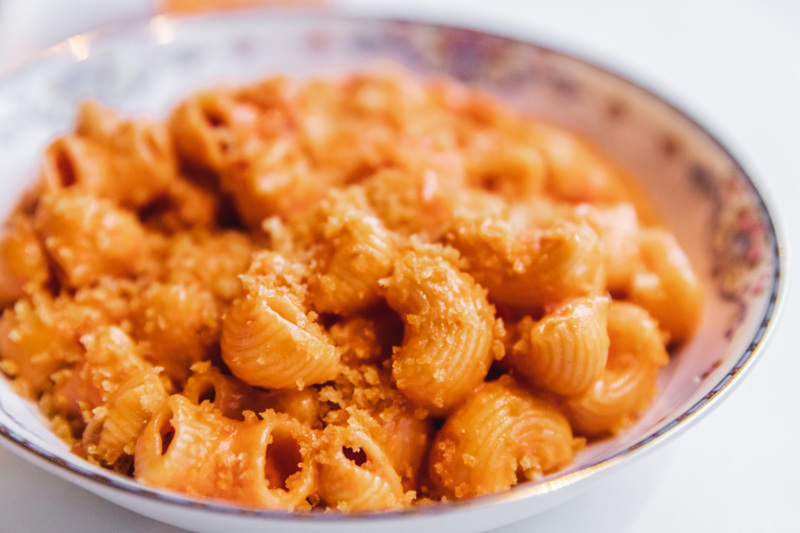
3. The pasta is seriously fresh.
While fresh pasta is hardly revolutionary at this point, it’s rare to see a restaurant making their own extruded pasta on the spot. At Elina’s, Rusnak and Safin use an Arcobaleno pasta machine to extrude fresh rigatoni for their alla vodka, one of the more popular dishes. Between the imported semolina flour, a vodka sauce recipe that was tested for months, and the crunchiest Calabrian breadcrumbs, this dish exemplifies that kind of flourish-free cooking the chefs intended. “Chefs have a tendency to add unnecessary flourishes to their dishes and that stuff is so tired,” Safin says. “We strive to be more direct in our approach.”
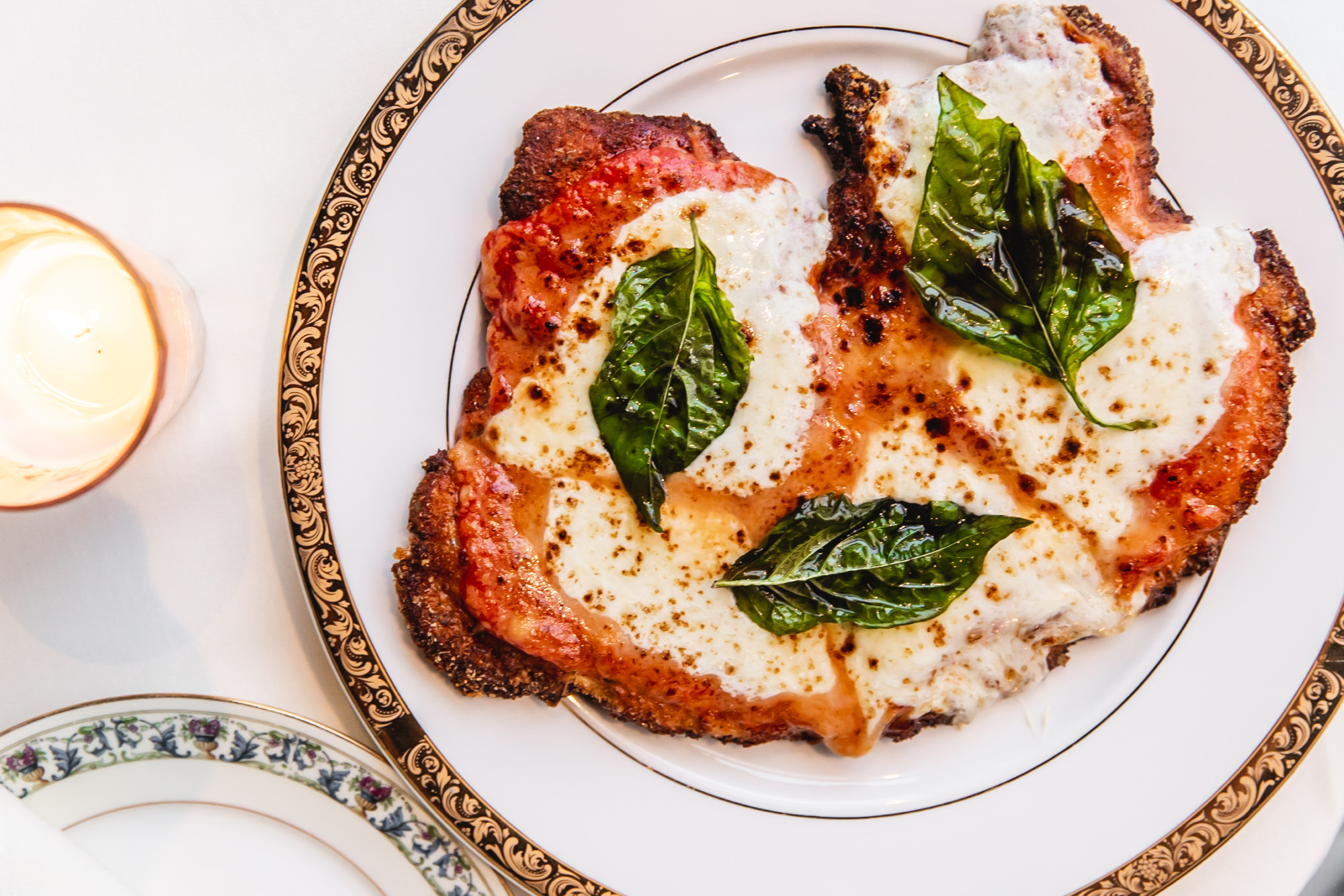
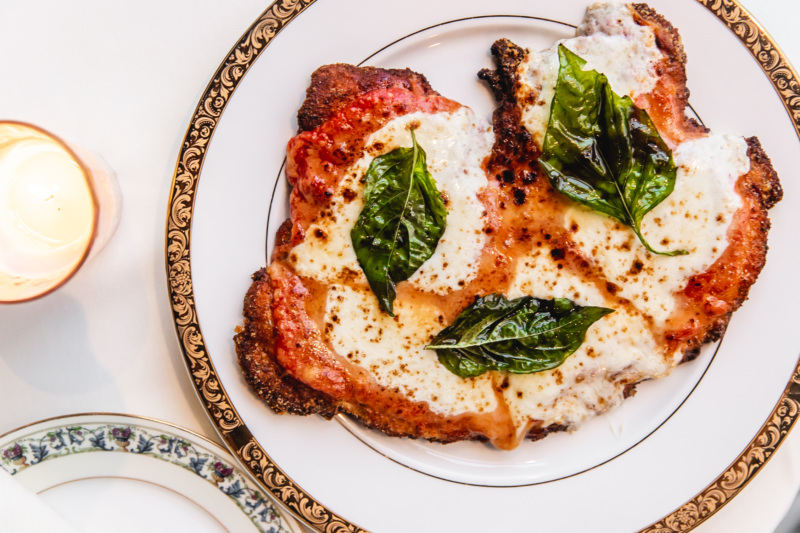
4. Don’t snooze on the specials.
It’s all in the details at Elina’s, from the oversized and extra olive oil-y croutons in the Caesar to the abundance of thin, crispy bits in the chicken Parm to the fresh, hot garlic bread that arrives complementary to every table. The same goes for the eggplant Parmesan special, where the chefs take the oft-mushy dish and transform it with a little technique. Fifteen layers of razor-thin eggplant slices perhaps stretches the definition of “simple,” but despite the precision, the flavors are as familiar and comforting as ever, with plenty of stretchy cheese, garlicky sauce, and bright green olive oil around the plate.
5. Drinks are coming soon.
At the moment, Elina’s is BYOB with a $10 corkage fee, while the team works out the final phase of obtaining their liquor license. The bar program will be overseen by Michael Huebner (Celeste, Revival Food Hall), who will have six signature cocktails available, including a mezcal and Campari-based paloma and a variation of a Corpse Reviver. no.2 with chamomile liqueur and gin from Elina’s neighbors at Wolf Point Distilling. For hotter days, they’ll also offer a twist on a frozen strawberry daiquiri. Wine-wise, guests can expect about 80% of the offerings to be Italian, and what Rusnak describes as “crowd-pleasing classics and esoteric curiosities priced to entice.”
Ariel Kanter is a writer, editor, and culinary school grad living in Highland Park, IL. Her work has been featured in The New York Times, Vanity Fair, Serious Eats, New York Magazine, and more. Follow her on Instagram at @arielkanter and subscribe to her newsletter here for her latest food and gifting recs. While you’re at it, follow Resy, too.










